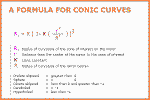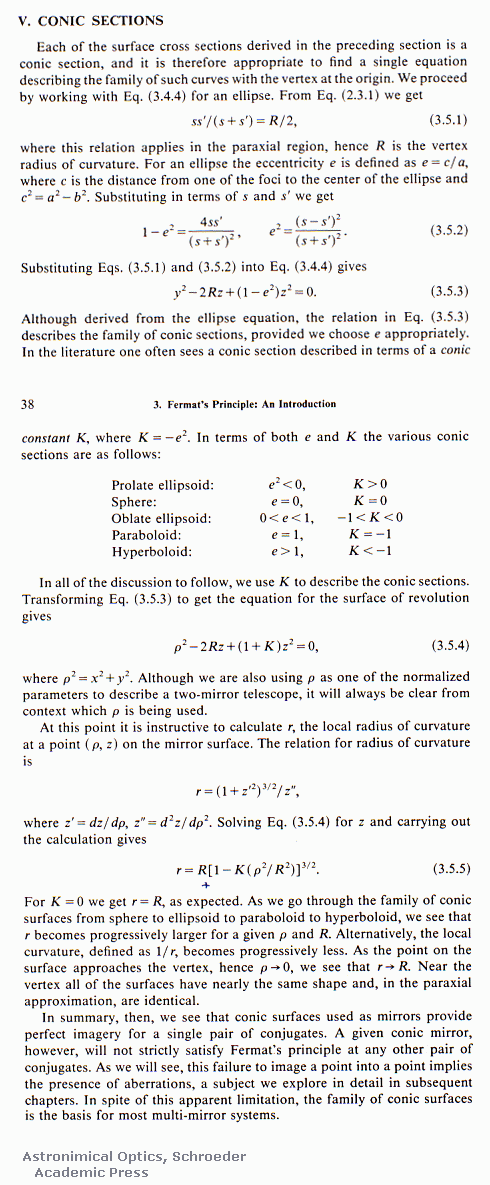The r squared / 2R formula can be a bit confusing.
In the old days, say before 1960 most people used a tester where the light source remained stationary and only the knife edge moved. Now days most people use a tester where the light source, usually an LED, and the knife edge or Ronchi grating move together on the same carriage. If you don't know which type of tester is being used in a description in a telescope making article then the wrong math will lead to a two to one error in calculations.
Add to this the 2 to 1 ratio from center to edge vs. center to 70 percent zone and there can be more 2 to 1 confusion.
Below I have collected four different values of difference between
center ROC and the point on the mirror's center axis where the ray from the
mirror's edge crosses the axis.
The results of calculation being for a tester where the light source
moves .
The test mirror is a 12.5 inch mirror with 165 inch focal length.
| .118371 | Classic r squared / 2R |
| .118455 | 'Sky and Telescope' article |
| .118371 | Derivation using trigonometry |
| .118415 | Approximation derived from the conic constant formula |
Classic r squared / 2R
This simple calculation is the one to use. Most tester results are +/- .005 inch at best.
'Sky and Telescope' article
The r sq / R formula is not exact. The exact formula is given in an article in Sky and Telescope, November 1992, page 574. The exact formula is:
d = r2 / R + ( r4 / 2 * R3 )
" .5 * ( r ^ 2 / R + (r ^4 / 2 * R ^3 ) ) " Appears as at left in the Applet parameters.
In the case of many amateur mirrors the second term is very small. Consider a 200 millimeter ( 8 inch ) f6 mirror. Its focal length is 1,200 mm, so R is 2,400 mm, and at the extreme rim of this mirror r = 100 mm. In this case the value of the second term is .004 mm.
So when is this formula exact? Apparently it is exact when using a fixed light source and compensates for the unequal distance from the mirror of the knife edge and light source.
Derivation using trigonometry
 This seems to be an exact calculation if the light source and knife edge
are at the same place as in a slit-less
tester. The presumptions are that the angle of reflection on a
parabola is equal to the angle of incidence. That the light ray from
space to the mirror edge is parallel to the axis of the center of the
parabola. That the derivation of the parabolic
formula is correct.
This seems to be an exact calculation if the light source and knife edge
are at the same place as in a slit-less
tester. The presumptions are that the angle of reflection on a
parabola is equal to the angle of incidence. That the light ray from
space to the mirror edge is parallel to the axis of the center of the
parabola. That the derivation of the parabolic
formula is correct.
" S + ( TAN( .5 * ( IVT( r / (( R / 2 ) - S ) ) ) ) ) " Appears as at left in the Applet parameters.
The the height of the point on the mirror edge where the light ray strikes the mirror is described by S in the parabolic formula.
 Approximation derived from the conic constant formula
Approximation derived from the conic constant formula
" ( R * ( ( 1 - A * r ^ 2 / R ^ 2 )^1.5 ) - R ) / 3 "
Appears as above in the Applet parameters.
The base formula gives the distance from a point on the mirror surface
to a point on the caustic curve. I
discovered that by subtracting R from the base formula and dividing the result
by 3 a good approximation of r sq / 2R can be found if the 'conic constant' in
the formula is set to minus 1 as for a parabola.
This is useful because the conic constant can be changed to generate a value
for sphere, ellipse or hyperbola.
Unfortunately I don't have a mathematical proof as to why it works.
A Surface Formula for Conic Sections
And as an aside if we solve the surface formula for conic curves for Sxy using the 'quadratic equation' solution from a high school or college algebra book then we get the equation below which is undefined when the 'conic constant' = -1.
"((-2 * R)-SQR(((R*2)^2) - 4*r*r * ( 1 + B )))/2 * (1+B)"
Appears as above in the Applet parameters.
The above formula will run in the Ronchi and Surf program's formula
parser with 'conic constant' set to -1 because the formula parser will sense
a divide by zero and substitute a small number.
This avoids a divide by zero which the computer cannot calculate. With the 'conic constant' set slightly off of -1 the parser
will produce the correct result although with some noise due to the
limitations of the computer's floating point number processor.
The formulas for conic
sections are derived from the formula for an ellipse in 'Astronomical
Optics' by Schroeder.

